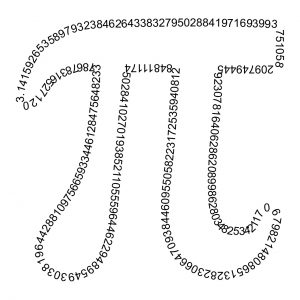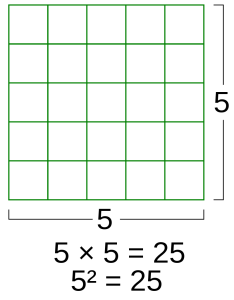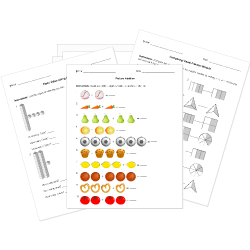Currently Browsing
Posts Tagged ‘ math ’
Top STEM Competitions – Could Your Student Be the Next Winner?
- 16 January //
- Posted in Teaching Resources //
- Tags : competitions, contests, math, science, STEM
- Comments Off on Top STEM Competitions – Could Your Student Be the Next Winner?

Engaging in STEM (Science, Technology, Engineering, and Mathematics) competitions offers students invaluable opportunities to apply their knowledge, develop critical thinking skills, become effective problem-solvers of real-world solutions, and ignite a passion for innovation. These contests not only enhance academic learning but also prepare students for future careers in STEM fields. Below is a list of top STEM competitions, categorized by educational level, along with essential considerations for participation.
Because contests and competitions are a great way to encourage and benefit students in STEM subjects, it’s a valuable tool in inspiring students to pursue careers in STEM-related fields – of which there is a major shortage. Quality competitions are therefore key in providing students with hands-on practice and application of core STEM concepts.
Before we dive into our list of the top STEM competitions by age group, here are a few considerations to think about:
Considerations Before Participating in STEM Competitions:
- Curriculum Alignment: Ensure the competition complements your educational objectives and standards. Do you have the classroom time to devote to working with students and their entries? If not, consider starting a school club dedicated to the project.
- Cost: Evaluate any associated expenses, including materials and potential travel. Many competitions do not cost anything, other than time. Others require the purchase or donation of materials. Still others require travel and associated expenses. Determine your budget prior to selecting a competition to avoid disappointing students if funding is not available. In the case where funding is not available, give the students the opportunity to brainstorm fundraising ideas.
- Timeline: Confirm that the competition’s schedule aligns with your academic calendar. Each competition will have a set of competition guidelines. In addition, some will require registration well before the submission deadline. Make sure that the timeline works with your teaching schedule so that students have ample time to complete quality projects they’re proud of.
Individual vs. Team Participation: Decide whether to compete individually or as part of a team, based on the competition’s structure. Remember, science is collaborative, and so are many STEM competitions. You’ll need to make a call on whether it’s best for your students to compete individually, in small teams, or as a class, and then select a competition that fits those needs.
STEM Competitions for Multiple Age Groups
American Computer Science League (ACSL)
- American Computer Science League (ACSL): An international competition that challenges students from grades K-12 to solve computer science and programming problems. Divisions are based on age and experience, covering topics like Number Systems, Boolean Algebra, and Digital Electronics. Languages used include Python, C++, and Java. An added benefit is that the competition is also online.
VEX Robotics Competition
- VEX Robotics Competition: A game-based engineering competition where student teams design and build robots. Divided into divisions such as Full Volume for grades 4-8 and Over Under for grades 9-12. The competition is an ideal environment for honing skills through the Teamwork Challenge to maximize scores, Robot Skills Challenge where you race against the clock, and STEM Research Project where students use the scientific method to research and solve a challenge.
ExploraVision Competition
- ExploraVision: The National Science Teachers Association and Toshiba ask small teams of K-12 students to envision what a current technology will look like in the future. The ExploraVision competition has refocused over the past several years to align with Next Generation Science Standards. The format of the competition is great, because it teaches students academic methods for presenting information. For example, students are required to submit an Abstract, detailed description meeting the requirements of sub-categories, a Bibliography, and Sample Web Pages.
FIRST Robotics Competition
- FIRST Robotics is the perfect competition if your students have an interest in robotics. With school teams and clubs worldwide, hundreds of thousands of students grades K-12 from countries all over the world participate annually in hands-on mentor-based robotics programs and competitions. It’s split into different age groups, with grades Pre-K to 8th taking part in the LEGO league, grades 7-12 taking part in the Tech Challenge, while older students in grades 9-12 can participate in the Robotics Competition. Winners gain access to substantial scholarships.
Science Olympiad
- Science Olympiad: Founded in 1984, this time-tested competition remains as popular as ever. Science Olympiad competitions take place in all fifty states of the US and are open to students in grades 6 – 12. Tournaments focus on teamwork and consist of standards-based challenges. Become part of the 6,000 teams today by checking out the latest rules.
American Rocketry Challenge Competition
- American Rocketry Challenge: What won’t students love about building rockets? Packet with a host of STEM skills, this competition is the perfect opportunity to get students excited to improve their designs and excel. The America Rocketry Challenge is open to middle and high school students, who take part in designing, building, and flying rockets complete with “astronaut” eggs. What’s great about this competition is that categories extend beyond just building a rocket, with Marketing Competitions and Presentation Competitions also honing valuable skills needed in STEM fields. With over 5,000 students participating in previous years, it’s proof that this competition is wildly fun and rewarding ($100,000 in prizes doesn’t hurt either!).
Technology Student Association Competition
- Technology Student Association: The TSA is all about developing leadership and career opportunities in science, technology, engineering, and math (STEM), and one of the mechanisms they achieve this is through competitions. They have a whole host to browse, depending on age and grade and the format varies to span hands-on design challenges, multiple choice questions, and an essay based around an annual theme. For example this year’s high school division offers Engineering Design, Technology Problem-solving, and Video Game Design. Check out the TSA website for more information.
EngineerGirl Essay Contest
- EngineerGirl Essay Content: Each fall the site posts an engineering-related prompt for students grades 3 – 12 to write about. Despite the name, the content is open to all students in grades 3 – 12, not just girls! This year, the prompt is to write about the lifecycle of an object that you use in your daily life.
Future City Competition
- Future City is a competition aimed at encouraging students to think about and solve real-world problems using cross-curricular skills to bring STEM to life! With climate change and sustainability being at the center of attention, and a point of anxiety for many youth, the competition hinges on a single question: “How can we make the world a better place?” This year’s theme is to conceptualise and design a 100% electrically powered city with energy generated from green sources. Students participate from all over the world and barriers to entry are low, with the entire program able to be completed for less than $100.
Game-a-Thon Competition
- Game-a-thon: Kids love games, so why not put them in the driver’s seat and have them create a card or board game? With Game-a-thon, cards, dice, and board games make for creative, hands-on learning. In this competition, students create games based on math concepts and submit videos of their games in action. The website has loads of examples from previous years for inspiration.
Regeneron Science Talent Search (STS) Competition
- Regeneron Science Talent Search (STS): The Regeneron Science Talent Search, the nation’s oldest and most esteemed science competition, invites high school seniors to participate in a unique and prestigious opportunity. To enter, students must undertake an original independent research project, supplementing their applications with recommendation letters and transcripts. Notably, 13 alumni of this competition have gone on to win the Nobel Prize—an impressive testament to its caliber. The competition is open to any senior-year high school student with the chance to win significant financial prizes and the opportunity for young scientists to showcase their groundbreaking work.
Other Competitions of Interest
- American Geosciences Institute Contests – In honor of October’s Earth Science Week, the AGI offers several annual contests for kids that celebrate Earth through visual arts, a nice option to support STEAM curriculums.
- MOEMS – This Math Olympiad for students in grades 4 – 8, allows students to compete in teams of up to 35 via an online monthly math test.
Elementary School STEM Competitions
- Science Olympiad Elementary Division: Offers young students the chance to engage in various science-related events, fostering teamwork and problem-solving skills.
STEM Competitions for Middle School Students
- National Science Bowl: A nationwide academic competition that tests students’ knowledge in all areas of science and mathematics.
- Discovery Education 3M Young Scientist Challenge – In this competition, students in grades 5 – 8 create videos on unique solutions to everyday problems. Multiple levels of prizes are given, including a grand prize worth thousands of dollars.
- MATHCOUNTS – Each four-student middle school team creates a video that teaches the solution to and a real-world application of a math problem selected from the MATHCOUNT’s handbook. MATHCOUNTS also offers “bee” style competitions and club programs.
- eCYBERMISSION – This web-based competition, sponsored by the U.S. Army, is for teams of students in grades 6 – 9 and focuses on real-life applications of STEM.
STEM Competitions for High School Students
- SourceAmerica Design Challenge – High school students innovate workplace technologies that diminish obstacles standing between people with disabilities and employment opportunities.
- Google Science Fair – Students 13-18 perform in-depth investigations of real-world problems in this competition that awards many prizes in different age categories.
- Imagine Cup – Microsoft’s Imagine Cup challenges high school students worldwide to create software applications that help resolve some of the world’s most challenging problems.
- Mathworks Math Modeling (M3) Challenge – A free, internet-based math challenge for juniors and seniors that addresses a real-world problem. The competition offers numerous scholarships to top-placing teams.
- Clean Tech Competition – Individuals and small student groups research, design, and produce papers around a real-world environmental theme that integrates eco-friendly energy sources.
- Regeneron Science Talent Search – Billed as the oldest U.S. science and math competition, this one is limited to high school seniors who submit original science research. The top 300 entries earn cash prizes and finalists will go on to compete for a huge cash prize.
- Math Prize for Girls – This is a competitive math prize for high school girls, held at the Massachusetts Institute of Technology each fall. Only 300 students will be selected to compete and applicants must take an American Mathematics Competition exam prior to applying for this competition.
Other Competitions of Interest:
- Science Olympiad Division C: Allows high school students to compete in a variety of science and engineering events at regional, state, and national levels.
- American Regions Mathematics League (ARML): A comprehensive mathematics contest consisting of multiple rounds, including team, individual, and relay rounds.
- Congressional App Challenge: A public challenge where high school students ideate, code, and build their own apps, with winning apps eligible to be featured in the Capitol Building.
- Junior Science and Humanities Symposium: A STEM competition where students present their original scientific research to judges and peers, with scholarships awarded at regional and national levels.
This is just a sampling of the many STEM competitions available. Many students also participate in local and regional science fairs that allow students to conduct and present authentic research and potentially compete at the national level in competitions like the Intel International Science and Engineering Fair and Broadcom MASTERS. However, most students will not win a national competition, so before entering students in a competition, consider the intrinsic value of participation. Look for well-organized competitions that offer clearly defined rules and judging criteria, as well as constructive feedback for all participants.
Remember to check out Help Teaching’s collection of science worksheets and online lessons to support your science teaching needs. If you enjoyed reading this article, try our Ultimate Guide to Teaching Science.
11 Prime Days to Celebrate Math Holidays
- 22 February //
- Posted in Teaching Resources //
- Tags : activities for children, math, teacher resources
- Comments Off on 11 Prime Days to Celebrate Math Holidays
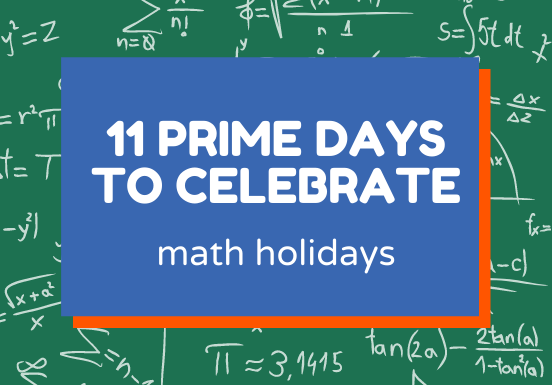
If you’re a math teacher, every day is a reason to celebrate math, but did you know that there are also a multitude of “holidays” centered around math? Using a math holiday as an angle to get students excited about math adds up to a whole lot of fun! We hope this list will inspire and energize your math teaching throughout the year. Keep reading to discover 11 prime days to celebrate math holidays.
1. Our first math holiday is e Day
If you teach any high school students with irrational math fears, then help them transcend their fears on February 7. Euler’s number, e, which is both irrational and transcendental, rounds to 2.7, thus we have e Day on 2/7. Show students the practical use of Euler’s number by introducing them to continuous compounding interest. A little lesson in financial literacy is always valuable!
2. 100th Day of School
The number of creative ways to celebrate this day is certainly not limited to 100! Ask students to bring in containers of 100 small objects and display them around the school. Have students create a list of 100 reasons why they love their school or community. Explore what life was like 100 years ago. Collect 100 food items and donate them to your local food pantry. Visit Help Teaching to use our 100 charts and lessons, as well as all of our counting worksheets.
3. Pi Day
Pi may be infinite, but Pi Day is not. Celebrate Pi Day on March 14 in recognition of its common abbreviation, 3.14. Plan a party with your students, but wait to sound the party horns until exactly 1:59 in the afternoon (3.14159)! Double the fun and make it a party for Albert Einstein, whose birthday is also on March 14. Be sure to check out Help Teaching’s worksheets featuring the number pi. Pi Day also kicks off World Math Week.
4. Mathematics & Statistics Awareness Month
Use all 1 + 4 + 9 + 16 days of April to celebrate the beauty and fun of mathematics. Focus on bringing math alive by making math relevant for students and connecting math and statistics to real-world problems. Elementary students can record daily weather data throughout April, then graph and analyze their results. Middle school students are at an age where decision making becomes more independent. Connect daily decisions making to probability with the game-based activity SKUNK. High school students have enough mathematical background to develop statistical questions on topics of personal interest, then collect, interpret, and present their data. Get started with this collection of statistics worksheets.
5. Square Root Day
The only thing square about Square Root Day is the date. When the day and the month are both the square root of the last two digits of the year, we have a Square Root Day. April 4, 2016 (4/4/16) was a Square Root Day, but the next one won’t be until May 5, 2025 (5/5/25)! Get radical and make these special days square-themed.
6. Palindrome Days
Palindrome days aren’t just for students named Bob or Hannah. Palindrome days fall on any dates where the numbers of the month, day, and year are the same both forward and backward. For example, in the year 2022, February 22 was a palindrome date (22/02/2022) but only in countries where dates are written in the dd/mm/yyyy format! Challenge your students to formulate lists of future Palindrome dates. Start with five-digit Palindrome dates (M/DD/YY) and work up to eight-digit dates (MM/DD/YYYY).
7. Pythagorean Theorem Day
As proof that the squares don’t have a monopoly on the math holidays, Pythagorean Theorem Day comes around periodically. Also known as Right Triangle Day, recognize Pythagorean Theorem Day whenever the sums of the squares of the month and day equals the square of the last two digits of the year. August 15, 2017 (8/15/17) and December 16, 2020 (12/16/20) are both Pythagorean Theorem Days. Make sure to check out our self-paced lesson on Solving Right Triangles.
8. Math Storytelling Day
No need to divide your instructional time between math and ELA on September 25 (9/25), it’s Math Storytelling Day! There are many ways to teach math through storytelling. Start the day by reading Math Curse, The Grapes of Math, or Sir Cumference or any math story to your students. Try a math story lesson like The General Sherman Tree or Let’s Go to the Zoo. Then, provide a writing prompt and ask students to write and share their own math stories.
9. Powers of Ten Day
Although 10/10/10 has passed, each October 10 can still be used to illustrate the powers of tens. Show your students the power of magnitude by screening the classic film Powers of TenTM. Spend at least one-tenth of your class time this day doing hands-on decimal or base ten exponent activities.
10. Mole Day
No, this day doesn’t pay homage to the subterranean dwellers. Rather, it is a special day for anyone with an interest in math or chemistry. If you remember Avogadro’s number, then you may guess the date of this math day! Mole Day takes place on October 23 each year between 6:02 a.m. and 6:02 p.m. (6.02 x 10^23) during National Chemistry Week. Use Help Teaching’s Chemistry Lessons and this TedEd video to introduce students to mathematical moles.
11. Our last math holiday is Fibonacci Day
Quick, what number comes next: 0 + 1 + 1 + 2 + 3 + ___? If you said five, then embrace your inner math geek and celebrate Fibonacci Day with your students on November 23 (11/23). Take this day to let your students explore the Fibonacci sequence and the Golden Ratio in nature. Mensa for Kids offers a nice selection of activities perfect for introducing students to the elegance of Fibonacci.

Visit HelpTeaching.com and utilize our growing library of K-12 math worksheets, lessons, and math generators!
How to Write Higher-Order Math Questions
- 1 May //
- Posted in How To //
- Tags : math, STEM, teaching tips
- Comments Off on How to Write Higher-Order Math Questions
As educators, we expect our students to learn and apply math concepts using higher-order thinking skills that go beyond rote learning. With the adoption of the Common Core Math Standards, many of us must do just that, by focusing more in-depth on fewer math concepts. However, writing math problems that require higher-order strategies can be almost as difficult as solving them.
To get started, try writing a lower-level math problem then apply one or more of the following techniques:
Tips for Writing Higher-Order Math Problems
- Have students determine and extrapolate a mathematical process or pattern and apply it to an unfamiliar problem or scenario
- Ask students to identify and evaluate missing or incorrect information
- Challenge students to solve one problem using multiple methods
- Consider asking, “Given ____, what would happen if ____ changed?” questions
- Give an answer and a mathematical concept, have students write their own questions or equations that produce the given answer
- Ask students to justify their solutions or identify and justify the “best” or “most correct” solution from a selection of plausible choices
- Write problems that ask for connections between more than one set of information, this could include charts, tables, equations, graphics, and data sets
- Watch that answers for multiple-choice questions are logical and that the correct choice is not structurally different from the incorrect answers
- If you are having difficulty writing a problem, start by constructing questions that incorporate these higher-order key words and concepts: analyze, justify, explain, apply, interpret, compare, estimate, predict, prove, formulate, modify
Consider the Common Core Math Standard 7.G.4
Know the formulas for the area and circumference of a circle and use them to solve problems; give an informal derivation of the relationship between the circumference and area of a circle.
A lower-order question for this standard could be:
What is the area of a circle with a radius of 5?
a) 5π
b) 10π
c) 25π
d) 100π
As presented, this question strictly tests student knowledge and application of the required formula. Instead, consider structuring the question using a “real-life” scenario that requires multiple steps to solve:
Official tournament play of Ringer marbles requires a circular game ring with a diameter of 10 feet. Alexis needs to construct multiple rings for a tournament using rope to mark the circumference of each ring. If she has 100 feet of rope, what is the maximum number of rings Alexis can make?
a) 2
b) 3
c) 4
d) 5
Finally, try constructing an open-response question that requires students analyze and evaluate the information in a non-routine manner:
Jackson explains to his classmate that doubling the circumference of a circle results in the doubling of the circle’s area. Is Jackson correct? Use the formulas for area and circumference to justify your answer.
This problem still satisfies skills posed in standard 7.G.4, however it now requires students not only demonstrate knowledge and application of the formulas, but also analyze the relationship between them.
Writing higher-order problems takes time, but ideally, the additional time will help students further develop the critical-thinking skills we strive to nurture as educators.
For more examples of higher-order math questions, view these questions created by HelpTeaching.com members:
Example 1: Problem Solving Strategies
Example 2: Fractions
Example 3: Logical Thinking
Example 4: Area
Example 5: Exponents
Example 6: Ratios
Visit HelpTeaching.com to browse our collections of math worksheets and math lessons or create questions and worksheets that meet your teaching needs.
Related Topics:
Using Math Images on HelpTeaching.com
How To Use Questions with Images
How to Format Math Equations
How to Customize Your Tests Created on HelpTeaching.com
How to Find Questions on HelpTeaching.com
How to Write Good Test Questions
How to Format Math Equations
- 25 April //
- Posted in How To //
- Tags : math, test designer
- Comments Off on How to Format Math Equations
Writing math problems can be time consuming, particularly when it comes to properly formatting mathematical equations. HelpTeaching.com offers the capability to create professional quality equations easily with our interactive math editor. With over 150 scientific and mathematical symbols to choose from, you can quickly generate equations ranging from basic exponents questions to the most complex calculus problems.
To format an equation, login to HelpTeaching.com and begin creating a question. Click on the “Insert a Math Equation” button located above the question field. A box will open in which you can enter an equation while selecting from a wide variety of math symbols available under the headings on the right side of the box.
Once the item is complete, select “Insert Equation” and you will return to the question creation screen. Special math tags will appear around the problem in this view, but the finalized format will appear after saving the question or when viewing in it “Preview” mode.
A simple way to get started is by visiting our section on “How to Write Math Equations” and clicking on any of the sample formulas shown on the page. The selected equation will automatically populate in the sandbox at the top of the page. You can then copy-and-paste the coding for this equation into a question you create and edit numbers or mathematical notation to fit your needs.
When creating items, multiple equations can appear in both questions and answers as well as in science questions. View the following links for examples of individual problems and free worksheets created with our equation editing tool:
Sample Math Equations and Worksheets
Integral
Logarithm
Exponent
Multiplication
Fraction
One-Step Algebraic Equations
Multiplying Radicals Worksheets
Graphing Absolute Value Inequality Worksheet
Vertical Angles Worksheet
Logarithmic Equations Worksheet
Sample Science Equations and Worksheets
Scientific Notation
Chemical Equation
Cellular Respiration
Density
Velocity
Balancing Chemical Equations Worksheet
Naming Compounds Worksheet
Related Topics:
How to Write Higher-Order Math Questions
How To Use Questions with Images
Using Math Images on HelpTeaching.com
How to Customize Your Tests Created on HelpTeaching.com
How to Find Questions on HelpTeaching.com
How to Write Good Test Questions
Mastering PARCC Math
- 14 March //
- Posted in Teaching Resources //
- Tags : assessments, math, parcc
- Comments Off on Mastering PARCC Math
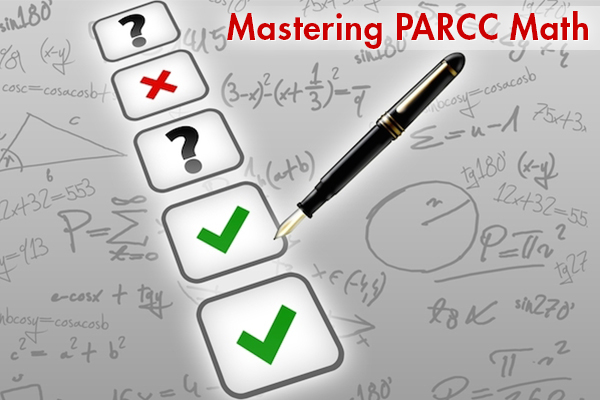
Spring has sprung and with it comes testing season. Over the next few months, students across multiple states will be taking on the new, two-part PARCC (Partnership for Assessment of Readiness for College and Careers). Although PARCC’s computer-based administration and question styling may look different from previous tests, it still aligns to the Common Core State Standards, the learning goals for the majority of U.S. classrooms.
Below we’ve highlighted a sampling of PARCC-style items to help you familiarize students with the types of math tasks they will encounter this spring. Find more PARCC-style worksheets and questions at HelpTeaching.com and be sure to visit Test Room to administer computer-based practice tests.
Multi-Select, Multiple-Choice Problems
Many of us grew up answering multiple-choice items that involved selecting one correct answer from four options. Today’s students will see multiple-choice questions that require selecting two or three correct answers from five or six options. For example, try your hand at this fourth grade PARCC style problem:
Students at this level should be able to compare fractions with different numerators and denominators. Multi-select questions assess student reasoning and allow for a more thorough evaluation of a student’s conceptual understanding. When it comes to solving these problems, encourage students to:
- read each question carefully
- determine the number of required answers
- eliminate incorrect answer choices
Incorrect Reasoning Problems
Simply being able to calculate answers correctly no longer makes the grade. Students must now show mastery of concepts by explaining why mathematical reasoning is flawed, and then correcting that reasoning. Give this third grade PARCC style problem a try:
In order to receive full credit, the student must provide a valid explanation as to why the statement is incorrect; once she justifies her reasoning, she must then calculate the correct answer. This challenges students to delve beyond procedural fluency and demonstrate understanding of both the how and the why behind mathematical reasoning. To help students solve this type of problem:
- encourage to them to write narrative justifications of their math work throughout the year
- ask students to practice justifying a problem aloud in front of the class
Multiple Part Problems
Multiple part problems present two or three questions based on a real-world situation that require students to show reasoning through modeling, critical thinking, and application of integrated standards. All three are core components of the PARCC assessment. Go ahead and try this fifth grade item:
At first glance, this problem may seem intimidating, but at its foundation, the item asks students to solve a basic length times width area problem. Beyond that, students must understand how to develop and solve expressions and equations, but within a real-world context. To help students solve this type of problem:
- scaffold lessons and practice opportunities to work up to this type of task
- challenge students to write modeling problems for their classmates to solve
- encourage creativity when developing and solving math problems
You will amazed by the quality of work your students are capable of!
Using these strategies to familiarize students with the style of questions they may face on the PARCC exam will help alleviate test anxiety. More importantly, reassuring your children that they have the knowledge to do well, encouraging them to just do their best, promoting a good night’s sleep, and eating a healthy breakfast will ensure they are ready to tackle the PARCC with confidence. After all, this is only a test.
3 Incredibly Useful Tools for Math Educators
- 18 January //
- Posted in Teaching Resources //
- Tags : math, math resources, teaching resources
- Comments Off on 3 Incredibly Useful Tools for Math Educators
Today, experts aren’t the only ones who can create very professional documents. “Content creation” tools have become far more accessible to a much broader audience. This is particularly true when it comes to math documents. By using some of these free, and incredibly useful tools, you’ll find it doesn’t take much to put together and publish quality math documents that you can be proud of.
1. Grapher
One the most indispensable tools is Grapher, which comes preinstalled on Apple computers. I frequently use this program to create most images of graphs that I include in my posts, but you can also use it to prepare graphs for worksheets or to help solve equations.
When you open Grapher, you must first determine the type of graph you’d like to make, with options that include both 2D and 3D versions, along with standard Cartesian, log, or polar graphs. Then, simply type in the formula you want to graph and Grapher does all the work. Once it’s drawn, if you click on the Inspector button, you can then click on your graph to further customize options, such as setting tick spacing on the axes, or changing the colors of your lines. In addition, there is a + button on the lower left which allows you to add additional equations to your graph. This option may be incredibly useful to show how changes to the basic equation causes the plot to shift or stretch.
Additional features of Grapher allow you to evaluate your curve at a specific point, and to even differentiate or integrate your equation. Alternately, you can use Grapher to plot specific points on a graph, and then interpolate a best fit line. Grapher fits my needs perfectly for creating beautiful images of graphs to include in my writings, and also as an advanced calculator to help me solve complex equations. There are many more features that I have not yet explored (e.g. periodic functions, parametric curves…), so you can see how valuable this free software can be! I can’t recommend it enough.
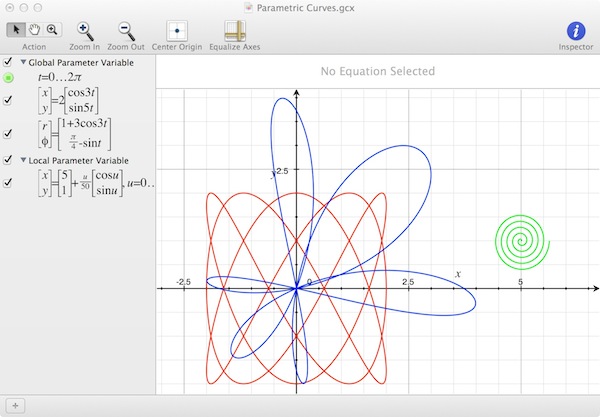
2. Microsoft Mathematics
A similar program to Grapher that’s designed for PC users is called Microsoft Mathematics. Considering the software is free, the feature set that it contains is extremely powerful and well-designed. It provides the same graphing and equation solving functionality found in expensive graphing calculators, plus additional features such as a triangle solver and unit converter. The basic software, with its comprehensive math components (e.g. trigonometry, statistics, calculus, algebra, etc.), targets students and helps them solve math problems. However, Microsoft offer an extra Mathematics Add-In for Word and OneNote, which may help educators embed graphs and equations into other documents, such as exams or worksheets. Considering that it’s free and made by Microsoft, you don’t have many reasons to not try it to see if it’s suitable for you.
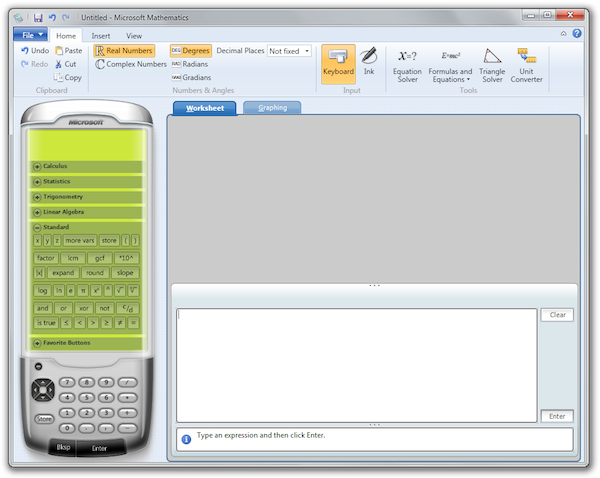
3. LaTeX
LaTeX (pronounced “lay-tech”) document markup language is more universal, and should be able to apply to any computer system. With it, you can create consistent, sharp math formulas that look like something you would see printed in a textbook. When you first start using LaTex, you may find it is slightly more complicated than simply typing out a document, but once you get going, you’ll find that it’s fairly self-explanatory and it comes highly recommended.
When you bring up the Online LaTeX Equation Editor, you will immediately see a large white box where you will add in the specifics of the equation you wish to produce. Below, updated in real-time as a properly formatted equation, you’ll see the final result. The gray buttons near the top are the functions you can use to build more advanced equations, although you can simply type the components of simple ones. For example, to generate a nicely formatted basic equation, you could just type in f(x)=2x^3. This will produce a consistently-formatted image representation of your equation, which you can copy and paste into your document. The downside to this method is that if you wish to make changes to your equation, you need to go back to the input rather than directly modifying your image inside your document.

Similar online tools include MathJax, an open source JavaScript program. Help Teaching members may also appreciate the Help Teaching Math Equations Editor which allows you to create your own math equations to add directly to math worksheets.
While a general type of tool, rather than a specific tool, cloud-based apps allow you to work on your documents wherever you happen to be. If you have a Google account, then you can take advantage of Google Drive. Similar to the Microsoft Office suite of software, Google’s version is all online, and much more basic. Similarly, Apple users can take advantage of the new iWork for iCloud apps, which includes Pages, Numbers, and Keynote to prepare their drafts. I like this option, because it syncs with my iPhone easily and allows me to make changes on the go.
When it comes to generating material for my math blog, these useful tools mentioned above are some of my go-to resources. They don’t cost anything and they help make my site that much more attractive and professional. Give them a try, and see what they can do to help with your math documents. If you use them, I’d love to see the results! Leave me a comment or email me at (thenumerist101 at gmail dot com). Also, be sure to follow me on Facebook and Twitter, @TheNumerist. And if you have some incredibly useful math tools of your own, be sure to share them in the comments below.
———–
Shaun Klassen has been writing online about math concepts for several years. His newest website project is The Numerist, where he includes a wide variety of quality tutorial pages that help explain mathematical concepts to students, or provide ideas for teachers to apply to their math lessons.
Supporting Common Core Math Standards with Images
- 21 October //
- Posted in How To //
- Tags : common core, math, STEM, teaching, teaching tips
- Comments Off on Supporting Common Core Math Standards with Images
Math is an inherently visual subject. Would you ask a first grade student to describe the properties of a triangle, but not allow her to draw one? Test a geometry student’s understanding of the relationship between parallel lines and transversals, but provide no visual model for the question? Ask an algebra student to solve a quadratic equation, but never have him plot one on a graph? Math questions with graphics allow students to comprehend mathematical concepts more quickly and more completely than those without images.
Help Teaching maintains a database of hundreds of graphics that directly support Common Core math standards. So whether you are introducing kindergartners to counting or high school students to the Law of Sines, here are some suggestions on how to incorporate images into your standards aligned math questions or worksheets.
 |
Visual Fraction Models support a range of grade one to six standards in the Geometry, Numbers & Operations – Fractions, and Number System domains. Students can develop an understanding of equal shares and fraction equivalence by comparing shaded models while older students can use models to hone critical thinking skills by solving real world problems. |
 |
Base Ten Blocks provide a visual representation of place value and support Number & Operations in Base Ten domain standards for kindergarten through grade five. Base ten blocks can be used to represent ones, tens, hundreds, and thousands and build up to illustrating multi-digit arithmetic. Combine blocks with pictographs and their use can be extended to include Counting & Cardinality standards by having students use them to learn number names and count sequences. |
 |
Grids and Graphs are mathematical staples when it comes to problem solving, so it comes as no surprise that the coordinate plane is mentioned across domains for middle and high school Common Core standards. For example, fifth graders can use Cartesian planes to learn to graph and locate coordinate pairs, directly supporting geometry standards while high school algebra students are expected to create and graph equations in two or more variables. |
 |
Circle and Polygon diagrams effectively illustrate geometry concepts across all grade levels. Beginning with learning to name and identify attributes of shapes in kindergarten to understanding circle terminology in high-school geometry, the inclusion of shape graphics in geometry questions is essential to improving student comprehension of Common Core standards. |
 |
Angle images directly support a wide range of geometry standards. Elementary students are expected to draw, recognize, and classify angles, while middle school students extend and apply this knowledge to describe geometric figures based upon their properties and solve multi-step problems to determine the measurement of an unknown angle. At the high school level, geometry students benefit from graphics to prove theorems like vertical angles are congruent. |
These are just a few examples of the Help Teaching images available that support Common Core math standards. View our complete selection of images or browse our collection of questions featuring graphics. Have suggestions for new math additions? Post your comments below or send us a note.
Read “How to Write Higher-Order Math Questions” and “How to Use Questions with Images” for more tips on creating quality, standards aligned math content.
20 Pinterest Boards for STEM Educators
- 19 May //
- Posted in For Parents, Teaching Resources //
- Tags : math, science, STEM, teaching resources, teaching tips
- Comments Off on 20 Pinterest Boards for STEM Educators
 Teachers have embraced Pinterest, the modern day equivalent of clipping magazine photographs and showing them to your friends, as a source of inspiration for classroom organization, projects, and curriculum resources. Pinterest offers a multifaceted platform for educators to research ideas for their classrooms, follow other pinners, and create boards linking to resources for students. For STEM educators, Pinterest is a visual brainstorm of hands-on science activities, curriculum materials, and the most recent advances in science and technology.
Teachers have embraced Pinterest, the modern day equivalent of clipping magazine photographs and showing them to your friends, as a source of inspiration for classroom organization, projects, and curriculum resources. Pinterest offers a multifaceted platform for educators to research ideas for their classrooms, follow other pinners, and create boards linking to resources for students. For STEM educators, Pinterest is a visual brainstorm of hands-on science activities, curriculum materials, and the most recent advances in science and technology.
If you are looking for new ideas for your science, technology, engineering, or math classroom, get started by following some of these Pinterest boards:
Best Kids Science Experiments – Steve Spangler fans will enjoy this collaborative board and visual playground of icky activities to engage students in the scientific process.
Citizen Science Programs – Check out these pins and find a citizen science project for your class to participate in.
Earth Science – Kids Discover offers a host of interesting boards for teachers, but geo-geeks will especially appreciate these pins to earth science articles, videos, and images.
Explore and Get Outdoors – The National Wildlife Federation’s board of ideas on getting kids back to nature.
Explore the Natural World – STEM educators will appreciate this board by PBS, featuring stunning images of nature that blur the boundaries of science and art.
Invertebrate Love – View these stunning images and videos of strange sea critters lacking skeletons.
iPad Landia – With the integration of iPads into more and more classrooms comes the need for finding quality apps and educational best practices. Get started with iPad Landia.
Los Alamos National Lab – Cool collection of boards for those who embrace their inner geeks. Pocket protectors anyone?
NASA EDGE Vodcasts – Engage students with these vodcasts by NASA EDGE. Maybe one of your students will become a rocket scientist.
NASA Goddard Space Flight Center – Don’t miss out on any “Wicked Cool Space Stuff.” Follow any or all of these boards from the Maryland Space Center.
NGSS: Next Generation Science Standards – The standards are out. Become familiar with them and stay up-to-date with NGSS progress with these pins by The Einstein Project.
Scientific Explorer – An essential collaborative board dedicated to “exploring scientific knowledge”.
Science & STEM – Get your STEM ideas flowing for hands-on, home projects with this resource board.
STEM STEM STEM – In case the name was unclear, this collection of pins by the National Science Teachers Association helps teachers stay up-to-date with trends in STEM education.
STEM Works – The STEM-Works program strives to increase science, technology, engineering and mathematics skills in communities nationwide and maintains this collection of boards including pins about CSI, jobs, lesson plans, robotics and more.
Students Like Tech! – Follow Edutopia’s board for EdTech ideas and trends.
Teaching with Sci-Fi – Even reluctant science students may enjoy a good science fiction book.
U.S. Department of Energy – Get the latest information on everything energy related, from STEM education to green energy.
Video Lectures in Mathematics – Looking for a refresher course on differential equations, a tidbit on the history of math, or a good math joke? Check out this collection of boards with over 1,400 pins to math lectures.
Women in Science – These photos of groundbreaking women in science, courtesy of the Smithsonian Archives, link to further information about these pioneers.
Follow Help Teaching on Pinterest to keep up with our newest free printables, premium worksheets, and blog articles!
5 Ways to Celebrate Math Month
- 7 April //
- Posted in For Parents, Fun Facts, Teaching Resources //
- Tags : activities for children, math
- Comments Off on 5 Ways to Celebrate Math Month

Math month is celebrated in April each year. Why? Math has an image problem, a negative reputation of sorts. If math teachers received a nickel for every time a student asked, “When will I ever need to use this after I graduate?” – well, do the math.
At it’s heart, math is a critical tool in solving many problems in the real world. On the face of it, students probably don’t realize that math and statistics are central in ensuring our messaging and internet are secure, that modelling climate change, trends, and other big data is all math-based, and that genetic advancements and medical research has math at their heart. And everyday, the applications of math is widening into ever more sectors, such as biotechnology, energy, business, sustainability, medicine, transport and AI, to name just some.
Without math, we simply lack a driver of innovation and the ability to either increase or decrease complexity.
Mathematics Awareness Week was established in 1986 with the hope of increasing public appreciation of math. It was later changed to a month-long celebration of math. Take advantage of this math month and explore the wonder of the world of numbers by engaging your students or child with one of the following activities that we think they’ll love.
Math Month Activity #1: Math Poetry
As it happens, the month of April is also Poetry Month, so why not combine the two themes and create some fun math poetry? This can take a number of forms:
- You can create poetry about math
- A poem can be created around a mathematical concept like the Fibonacci sequence
- Or you can use actual math to create a poem or limeric, like this example
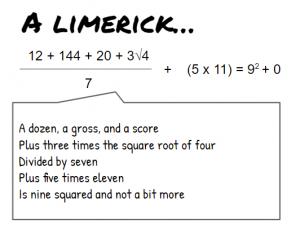
Math Month Activity #2: Ask Fermi Questions
Quick! How many drops of water are in a gallon? No calculator allowed! Nobel Prize winning physicist Enrico Fermi was known for his capacity to perform rapid mental estimations. The goal of answering a Fermi question is to find an answer on the correct order of magnitude instead of an exact number. For example, I would estimate there are about 20 drops of water in a teaspoon and 768 teaspoons in a gallon. To make it easier, I can round 768 to 800 and guess that a gallon has around 16,000 drops of water. Whether the precise answer is 10,000 or 90,000 does not matter for a Fermi question, what matters is the answer is on the correct order of magnitude (104 in this case). To get started, visit fermiquestions.com.
Another fun variation of this is to have an estimation jar. Fill it with jelly beans, or any other filling like dried beans, buttons, or marbles, and students can take turns estimating (or guessing!) what the answer is. The closest answer wins the prize – or if it’s something like buttons or beans, a better prize
Math Month Activity #3: Write to Manufacturers about Metric Misuse
Ask your students to make a list of products at home and record the metric labeling for volume or mass printed on the labels exactly as they appear on the products. Then have students compare the labels with the U.S. Metric Association’s guide to “Correct SI-Metric Usage.” Chances are, at least one of the products will be metrically mislabeled. Next, have each student write to a manufacturer and either point out incorrect metric usage (politely!) or thank them for promoting good metric usage. As a bonus, many manufacturers will kindly respond to student letters.
Math Month Activity #4: Explore Math in the Workplace
Dispel the myth that students will never use math once they leave school by inviting professionals to your class to share how they use math in their careers. Take a field trip a local business willing to give a tour and discuss the importance of math in the workplace. Students may be surprised to learn how often math is used outside the classroom. For more information, the U.S. Bureau of Labor Statistics offers a Periodic Table of Stem Careers.
Math Month Activity #5: Watch a Math Movie
What student doesn’t love a movie? From The Theory of Everything to Stand and Deliver to Moneyball to Good Will Hunting, finding a movie featuring math content isn’t difficult. Get started by checking out this list of movies featuring positive math themes. Also, read Test Designer’s article on using movies in the classroom.
Bonus Math Month Activities: Read a Math Book
Who doesn’t love a good book? And if you can get one about math that isn’t a textbook, all the better. We suggest Sir Cumference and the Dragon of Pi by Wayne Geehan (or you can check out a reading of it YouTube). Characters with fun names like Sir Cumference and Lady Di Ameter, bring light-hearted fun on an adventure that see’s our hero turned into a fire-breathing dragon and solving riddles and math puzzles to change him back.
Further Reading
Read our articles, “How to Write Higher-Order Math Questions” and “Top STEM Competitions – Could Your Student Be the Next Winner?” for more math education ideas.



